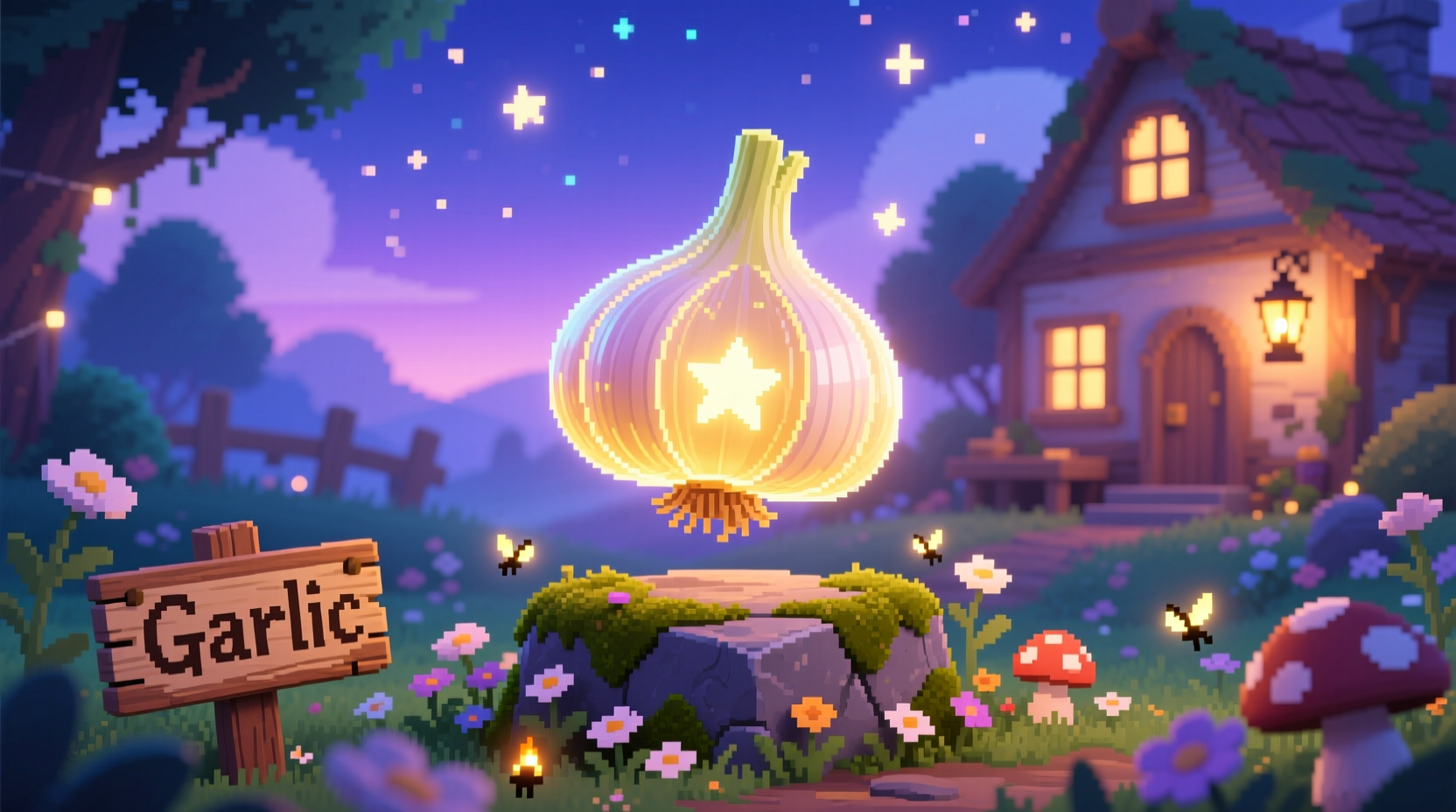As you plan your first spring season in Stardew Valley, understanding garlic's unique advantages can make the difference between struggling financially and building a solid foundation for your farm. This versatile crop offers new players an accessible entry point into farming while still providing value for experienced farmers looking to optimize their seasonal rotations.
Garlic Growth Cycle Explained
Garlic follows a straightforward growth pattern that makes it ideal for beginners. Unlike more complex crops, garlic requires no special conditions beyond standard watering:
| Stage | Days Required | Visual Indicator |
|---|---|---|
| Planting to Sprout | 1 day | Small green shoot appears |
| Sprout to Mature | 3 days | Leaves grow taller, bulb visible |
| Harvest Recharge | 2 days | Regrows after initial harvest |
This predictable timeline means you can precisely plan your farming schedule. Plant garlic on spring day 1, harvest on day 5, and enjoy subsequent harvests every 2 days until the season ends. The crop won't survive the transition to summer, so maximize your spring planting window.

Profit Analysis: Is Garlic Worth Growing?
While not the highest-earning spring crop, garlic offers exceptional reliability for new players. Consider these financial metrics when planning your spring strategy:
- Base investment: 60g per seed from Pierre's General Store or 40g via Seed Maker
- Base profit per harvest: 60g (normal quality), 75g (silver star), 90g (gold star)
- Total season potential: 1,320g per tile with quality fertilizer and gold watering can
- Return on investment: 22x your initial seed cost over the season
Compared to other spring options, garlic provides consistent daily income rather than larger but less frequent payouts. This steady cash flow helps cover essential early-game expenses like tool upgrades and additional seeds.
Strategic Planting Guide
Maximize your garlic production with these proven techniques:
Optimal Planting Window
Plant garlic between spring days 1-14 for maximum harvests. Later plantings yield fewer harvests before summer begins. The game's internal calendar shows:
- Planting on day 1: 12 total harvests possible
- Planting on day 8: 8 total harvests possible
- Planting on day 15: Only 4 harvests before season ends
Fertilizer Strategy
While basic fertilizer improves quality, quality fertilizer delivers the best return for garlic:
- Basic fertilizer: 10% quality boost, costs 100g
- Quality fertilizer: 40% quality boost, costs 150g
- Deluxe fertilizer: Not cost-effective for garlic
Apply quality fertilizer at planting time for maximum gold-star yield, increasing your profit by 50% per harvest.
Garlic vs. Other Spring Crops
Understanding where garlic fits among spring options helps optimize your farm layout. This comparison shows why garlic remains valuable despite higher-earning alternatives:
| Crop | Days to Harvest | Profit Per Tile | Best For |
|---|---|---|---|
| Garlic | 4 + 2 | 1,320g | Steady income, beginners |
| Kale | 6 + 7 | 1,540g | Higher profit, patient farmers |
| Blue Jazz | 7 (single harvest) | 770g | Quick setup, low maintenance |
| Cauliflower | 12 (single harvest) | 1,760g | Max profit, risk-tolerant players |
Garlic's advantage lies in its frequent harvests, providing daily income rather than waiting for single large payouts. This makes it particularly valuable during your first spring when consistent cash flow matters most.
Advanced Garlic Applications
Experienced players leverage garlic beyond basic sales:
- Bundle contribution: Essential for the Spring Crops bundle in the Community Center (requires 5 garlic)
- Cooking ingredient: Used in recipes like Roasted Hazelnuts and Artichoke Dip
- Quest item: Occasionally requested for NPC bundles and quests
- Animal feed: Can be used in artisan goods production with certain farm animals
Common Mistakes to Avoid
Even experienced players sometimes mismanage garlic production. Watch for these pitfalls:
- Planting too late: Starting after day 10 significantly reduces total harvests
- Overlooking quality: Without proper tools and fertilizer, profits drop by 25-50%
- Ignoring crop rotation: Leaving space for summer planting after spring ends
- Misjudging water needs: Forgetting to water during rainy days (crops still need watering)
Seasonal Integration Strategy
Smart farmers integrate garlic into their broader seasonal planning. Consider these approaches:
- Reserve 25-30% of your spring space for garlic as reliable income
- Use garlic profits to fund higher-risk, higher-reward crops like cauliflower
- Harvest garlic on spring day 27 to clear space for summer planting on day 28
- Save some seeds for the next year to avoid Pierre's markup
By treating garlic as part of your overall farming strategy rather than an isolated crop, you create financial stability that supports more ambitious agricultural projects later in the game.











 浙公网安备
33010002000092号
浙公网安备
33010002000092号 浙B2-20120091-4
浙B2-20120091-4